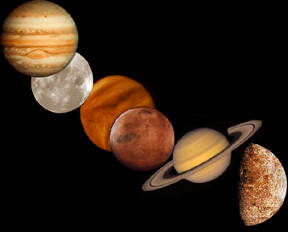A picture of the Cassini probe before launch
Click on image for full size
Image courtesy of NASA
Cassini Probe Burning for Venus
News story originally written on December 2, 1998
The
Cassini spacecraft will conduct a major
course correction (called a deep space maneuver, or DSM) on December 2nd
at 10:00 p.m. PST (December 3rd at 0600 GMT). You will be able to see
Cassini's speed change live during the DSM. Just follow the link from the
Cassini Mission Homepage.
The spacecraft will fire its engine to slow its speed relative to the sun
by 452 m/s. This will allow Cassini to rendezvous with Venus for a
gravity assist on its way to
Saturn.
You might also be interested in:

It was another exciting and frustrating year for the space science program. It seemed that every step forward led to one backwards. Either way, NASA led the way to a great century of discovery. Unfortunately,
...more
The Space Shuttle Discovery lifted off from Kennedy Space Center at 2:19 p.m. EST, October 29th. The sky was clear and the weather was great as Discovery took 8 1/2 minutes to reach orbit for the Unitied
...more
A moon was discovered orbiting the asteroid, Eugenia. This is only the second time in history that a satellite has been seen circling an asteroid. A special mirror allowed scientists to find the moon
...more
Will Russia ever put the service module for the International Space Station in space? NASA officials are demanding an answer from the Russian government. The necessary service module is currently waiting
...more
During a period of about two days in early May, 1998, the ACE spacecraft was immersed in plasma associated with a coronal mass ejection (CME). The SWICS instrument on ACE, which determines unambiguously
...more
J.S. Maini of the Canadian Forest Service has referred to forests as the "heart and lungs of the world." Forests reduce soil erosion, maintain water quality, contribute to atmospheric humidity and cloud
...more
In late April through mid-May 2002, all five naked-eye planets are visible simultaneously in the night sky! This is includes Mercury which is generally very hard to see because of its proximity to the
...more









